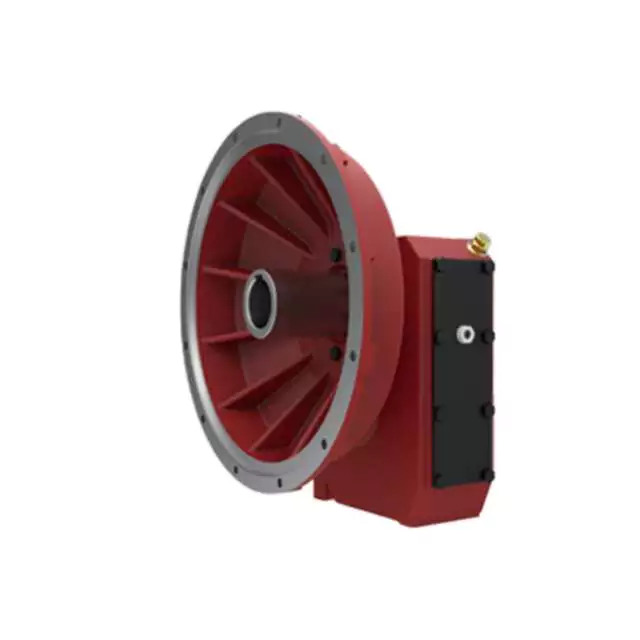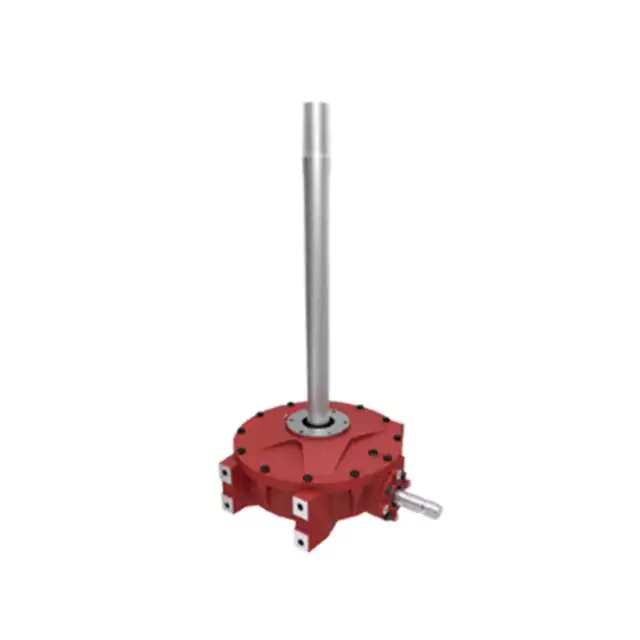Product Description
Best manufacturer Agricultural spare parts gearbox
Product Description
Characteristic
Agricultural gear box is an important part of many types of agricultural equipment. It is the core of the grain planting and harvesting process. With the continuous growth of population, the demand for food will also continue to grow. As the CHINAMFG cycle becomes shorter and heavier, the demand for more food will increase the burden on the gearbox. More agricultural equipment will need high-quality gearbox replacement parts. Fortunately, the best way to find quality alternatives is to know what to look for when looking for new products.
Bevel gear box
Agricultural equipment manufacturers should look for high-quality and durable bevel gear boxes to meet their unique needs. The quality and function of any mechanical equipment are the key factors of its durability. Therefore, it is important to choose a durable model to ensure that you do not have to buy it again. Here are some reasons why you should look for a long-term bevel gear box:
Bevel gear boxes are common in agricultural equipment because they are characterized by the ability to transmit power through 2 orthogonal shafts. The 2 axes intersect 90 degrees, but there can be other angles. The direction of the output shaft and the drive shaft may be the same or opposite, which helps to avoid interference. These types of gearboxes come in many sizes and types.
Right angle gearbox
The right angle agricultural gearbox is designed to rotate to the right or left. Its configuration can be customized to suit Personal requirements. Here are some factors to consider before choosing a right angle gearbox. Read on to learn more about these agricultural gearboxes. They are available in various sizes and can be customized to suit various applications. These gearboxes have a hollow shaft for leads and clamping devices.
For high-speed, high torque operation, right angle gearbox is the ideal solution. From car washing to food processing,Right angle gearboxes are ideal solutions for many applications. Their compact design and low maintenance mean they require minimal maintenance. With the help of active steps, you can extend its service life. So choose the right product for your agricultural application and start reaping its benefits.
Shaft mounted gearbox
Slender shaft mounted agricultural gearbox is an ideal choice for this application. Its design feature is that the gearbox shell is similar to the shell of the tractor, and the input shaft and output shaft are installed in parallel. The gearbox housing is designed as a “backbone” between the internal combustion engine and the rear axle. Its design features are hydraulic control mode and continuous meshing gear.
There are 4 common types of gear boxes, namely concentric, parallel, right angle and foot mounted. Shaft mounted agricultural gearboxes are usually installed in applications where foot mounting is not permitted. This type of gearbox can be installed on the shaft of the driven equipment with the help of the torque arm. It is important to firmly fix the shaft in place, because a soft foot may cause dislocation between the 2 shafts.
Falk transmission
If you own an agricultural gearbox, you will realize the importance of its parts. Agricultural gearboxes must operate efficiently, or CHINAMFG yields will be consumed. Falk transmission parts are used in many industries, including gardening, poultry breeding and food processing. Read on to learn about the benefits of Falk agricultural transmission parts for you. Don't forget to look for the latest products of the company!
Heavy machinery is crucial to agriculture, especially in the grain industry. Without heavy machinery, farmers cannot produce the crops needed to feed the world. Therefore, agricultural machinery such as Falk gearbox and reducer is very important to these industries. Maintenance and replacement are necessary conditions for agricultural machinery to continue to operate effectively. When you run a farm, it is essential to use high-quality gearbox parts.
Company Information
/* January 22, 2571 19:08:37 */!function(){function s(e,r){var a,o={};try{e&&e.split(“,”).forEach(function(e,t){e&&(a=e.match(/(.*?):(.*)$/))&&1
| Type: | Agricultural |
|---|---|
| Usage: | Agricultural Products Processing, Farmland Infrastructure, Tillage, Harvester, Planting and Fertilization, Grain Threshing, Cleaning and Drying |
| Material: | Iron |
| Power Source: | Electricity |
| Weight: | 18kg |
| After-sales Service: | Installation Guide 3-Year Warranty |
| Customization: | Available | Customized Request |
|---|

Using Agricultural Gearboxes in Specialized Tasks: Tilling and Planting
Agricultural gearboxes are versatile components that play a crucial role in various farming operations, including specialized tasks such as tilling and planting. Here's how agricultural gearboxes are utilized in these tasks:
- Tilling: Tilling is an essential step in preparing the soil for planting. Agricultural gearboxes are used in tractor-mounted tillers to drive the rotating tines that break up and turn over the soil. The gearbox's high torque capabilities and power transmission efficiency allow the tiller to work effectively even in tough soil conditions. Adjustable gear ratios in the gearbox enable operators to control the tiller's speed and penetration depth, optimizing soil preparation.
- Planting: Precision planting requires accurate seed placement and spacing to maximize crop yield. Agricultural gearboxes are integrated into planting equipment to drive mechanisms that distribute seeds evenly at the desired depth. The gearbox's ability to transmit power with precision ensures consistent seed placement, contributing to uniform germination and plant growth. Some gearboxes in planting equipment also offer variable speed options, allowing farmers to adjust planting rates based on seed types and field conditions.
By enabling efficient power transmission and offering customizable speed and torque settings, agricultural gearboxes enhance the effectiveness of specialized tasks like tilling and planting. Farmers can rely on these gearboxes to achieve optimal soil preparation and planting accuracy, ultimately contributing to higher crop yields.

Handling Varying Torque Demands with Agricultural Gearboxes
Agricultural gearboxes are designed to handle the varying torque demands associated with different tasks in farming operations. The torque requirements can vary based on factors such as the type of task, the soil conditions, the terrain, and the machinery's speed. Agricultural gearboxes are equipped with features that allow them to adapt to these varying torque demands:
- Gear Ratio Selection: Agricultural gearboxes often come with multiple gear ratios, allowing operators to select the appropriate ratio for the task at hand. Lower gear ratios provide higher torque for tasks that require more force, such as plowing or tilling, while higher gear ratios offer higher speeds for tasks like mowing or transporting.
- Torque Multiplier: Some agricultural gearboxes are designed with torque multipliers that enhance the torque output from the engine to the wheels or implement. These multipliers are engaged when higher torque is needed, helping the machinery handle heavy loads or challenging terrain.
- Adjustable Speeds: Many agricultural gearboxes allow operators to adjust the speed of the machinery to match the torque requirements of the task. This flexibility is essential for tasks that involve both high-torque, low-speed operations and high-speed operations with lower torque needs.
- Power Take-Off (PTO) Options: Agricultural gearboxes often feature power take-off mechanisms that enable the transfer of power from the engine to attached implements. These mechanisms can be designed to provide varying torque outputs to suit different implements, such as rotary tillers, balers, or pumps.
The ability of agricultural gearboxes to handle varying torque demands is crucial for ensuring efficient and effective farming operations. By offering adjustable gear ratios, torque multipliers, and adaptable speeds, these gearboxes empower farmers to optimize their machinery's performance based on the specific requirements of each task.

Types of Agricultural Gearboxes for Specific Tasks
Various types of agricultural gearboxes are designed to cater to specific tasks and applications in farming. These gearboxes are engineered to meet the unique requirements of different agricultural machinery and operations. Some common types of agricultural gearboxes include:
- Rotary Mower Gearboxes: These gearboxes are used in rotary mowers and cutters. They transmit power from the tractor's power take-off (PTO) to the blades, enabling efficient cutting of grass, crops, and vegetation.
- Manure Spreader Gearboxes: Manure spreaders utilize specialized gearboxes to distribute manure evenly across fields. These gearboxes ensure consistent spreading of fertilizer while accommodating variable loads.
- Harvesting Gearboxes: Gearboxes used in harvesting equipment, such as combines and harvesters, enable efficient gathering, threshing, and separating of crops from their stalks. These gearboxes handle high loads and varying operating conditions.
- Seed Drill Gearboxes: Seed drills require gearboxes to distribute seeds accurately and at consistent intervals. These gearboxes ensure precise seed placement for optimal germination and crop growth.
- Hay Rake Gearboxes: Hay rakes utilize gearboxes to gather and arrange hay into windrows for baling. These gearboxes help optimize the hay collection process.
- Irrigation System Gearboxes: Agricultural irrigation systems may use gearboxes to control the movement and positioning of irrigation equipment, ensuring efficient water distribution across fields.
- Tillage Equipment Gearboxes: Gearboxes used in tillage equipment, such as plows and cultivators, help break up soil, prepare seedbeds, and promote seedling emergence.
- Tractor Gearboxes: Tractors may incorporate various gearboxes for tasks such as shifting gears, driving the power take-off, and operating attachments.
- Grain Auger Gearboxes: Grain augers use gearboxes to facilitate the movement of harvested grain from one location to another, such as from a combine to a storage bin.
Each type of agricultural gearbox is designed with specific features, load capacities, and durability to suit the demands of its intended task. Manufacturers engineer these gearboxes to withstand the challenging conditions of agricultural operations while ensuring efficient and reliable performance.


editor by CX 2024-05-06
